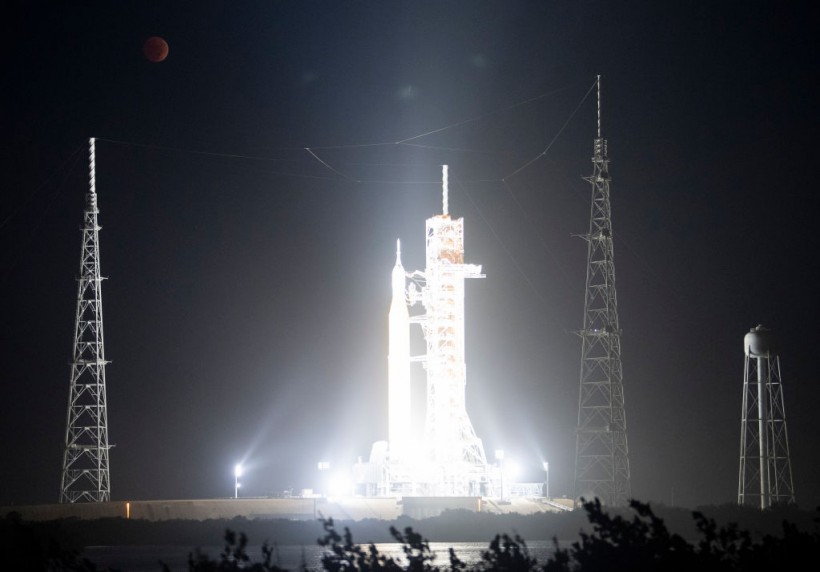As the total solar eclipse traverses North America on April 8, NASA intends to launch rockets to investigate its atmospheric effects. The agency plans three rocket launches from NASA's Wallops Flight Facility as part of the Atmospheric Perturbations around Eclipse Path (APEP) mission.
(Photo : Joel Kowsky/NASA via Getty Images)
Studying the Effects of Solar Eclipse on Earth's Ionosphere
The sudden transition from day to night during a solar eclipse is well-documented for its impact on temperature and animal behavior. Yet, current understanding of its effects on the ionosphere remains limited.
Typically, ultraviolet radiation from the sun ionizes atoms, leading to an increase in electrically charged particles in the upper atmosphere. As dusk approaches, these ions recombine into neutral atoms, causing the upper atmosphere to thin out until dawn, when the cycle repeats. However, the specific influence of brief moments of darkness on the ionosphere is poorly understood.
Aroh Barjatya, a professor of engineering and physics at Embry-Riddle Aeronautical University, likened the eclipse to a disruptive force on a calm pond. The eclipse creates disturbances that ripple through the ionosphere, affecting its composition and behavior.
Barjatya's analogy captures the essence of scientists' challenge in understanding the dynamic interactions between the solar eclipse and Earth's atmosphere.
To illuminate these phenomena, NASA plans to launch three rockets before, during, and after the April 8 eclipse. As part of the APEP mission, these rockets will carry scientific instruments to collect data on how the eclipse affects the ionosphere.
By studying the ionosphere's response to the eclipse, scientists hope to gain insights into the mechanisms behind these disturbances and improve our ability to predict and mitigate their impacts on communication systems.
Barjatya and his team will launch rockets from NASA's Wallops Flight Facility to observe the eclipse's impact on the ionosphere. They anticipate significant dimming despite partial sunlight. Previous experiments during eclipses revealed communication disruptions, underscoring the importance of predicting such phenomena for the reliability of communication systems.
Excitement is high among APEP researchers, who are eager to compare results and deepen their understanding of solar-terrestrial interactions to improve forecasting and manage communication impacts.
Past Solar Eclipse Experiments: Insights and Implications
The same engineers had conducted a similar experiment during last October's partial "ring of fire" solar eclipse when the moon blocked up to 90% of the sun's light. Results from those launches revealed that the decrease in sunlight had induced disturbances capable of affecting radio and satellite communications, underscoring the need for improved predictive capabilities.
NASA had sought to observe atmospheric perturbations during the eclipse through three suborbital rockets, each scheduled to launch before, during, and after the eclipse's peak to collect data on Earth's atmosphere, electron density, and temperature.
The annular solar eclipse had been experienced only along a specific path spanning Oregon, Northern California, Nevada, southwestern Idaho, Utah, northeastern Arizona, southwestern Colorado, New Mexico, and Texas, with the next occurrence in this region not expected until 2046.
Beyond the U.S., the eclipse's path extended through Mexico's Yucatan Peninsula, Belize, Honduras, Nicaragua, Panama, Colombia, and Brazil. While only those within the path had witnessed the "ring of fire" phenomenon, individuals across North, Central, and South America had observed a partial solar eclipse.
RELATED ARTICLE: April 8 Total Solar Eclipse Brings Rare Celestial Spectacle Amidst Solar Cycle Peak
Check out more news and information on Solar Eclipse in Science Times.














